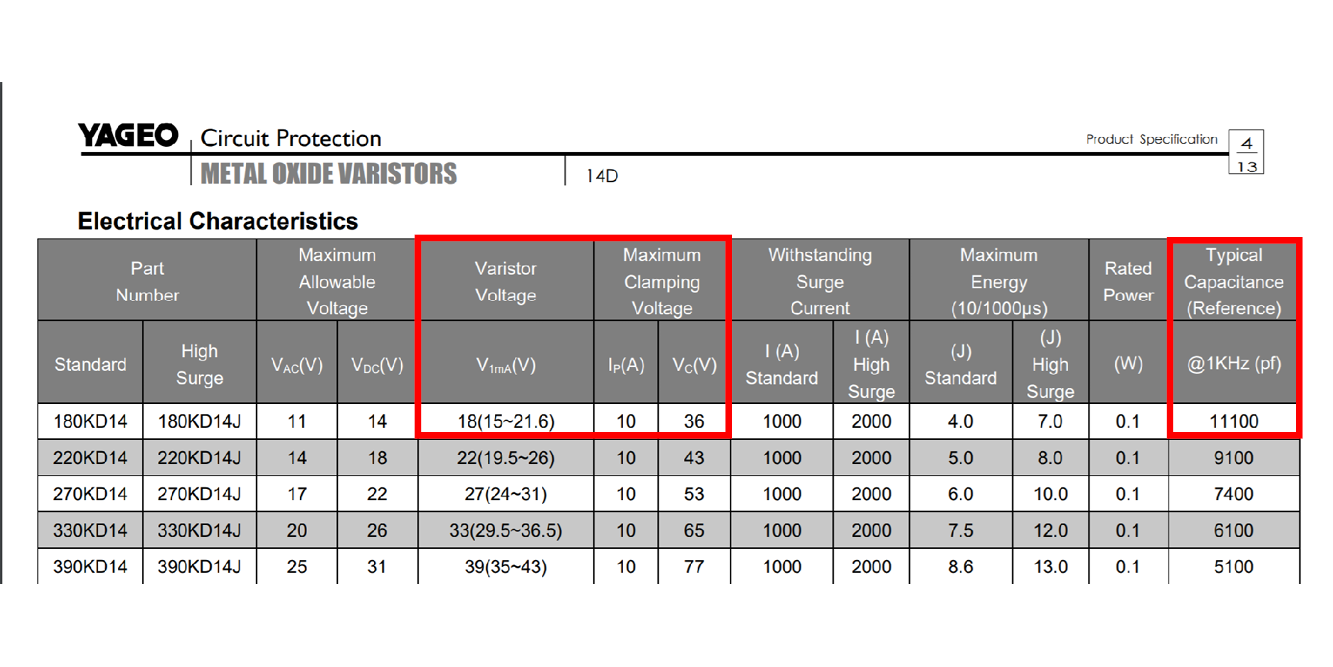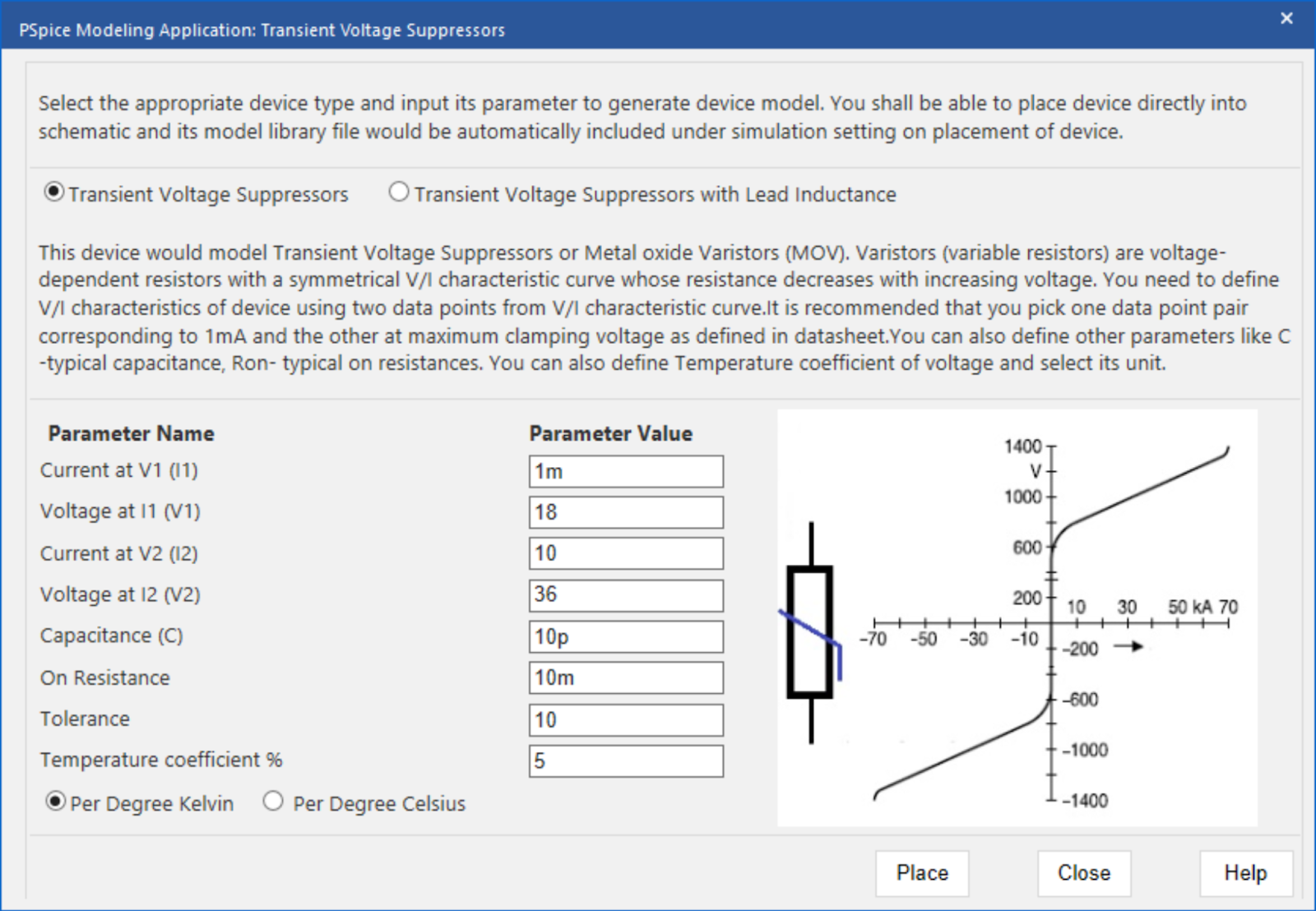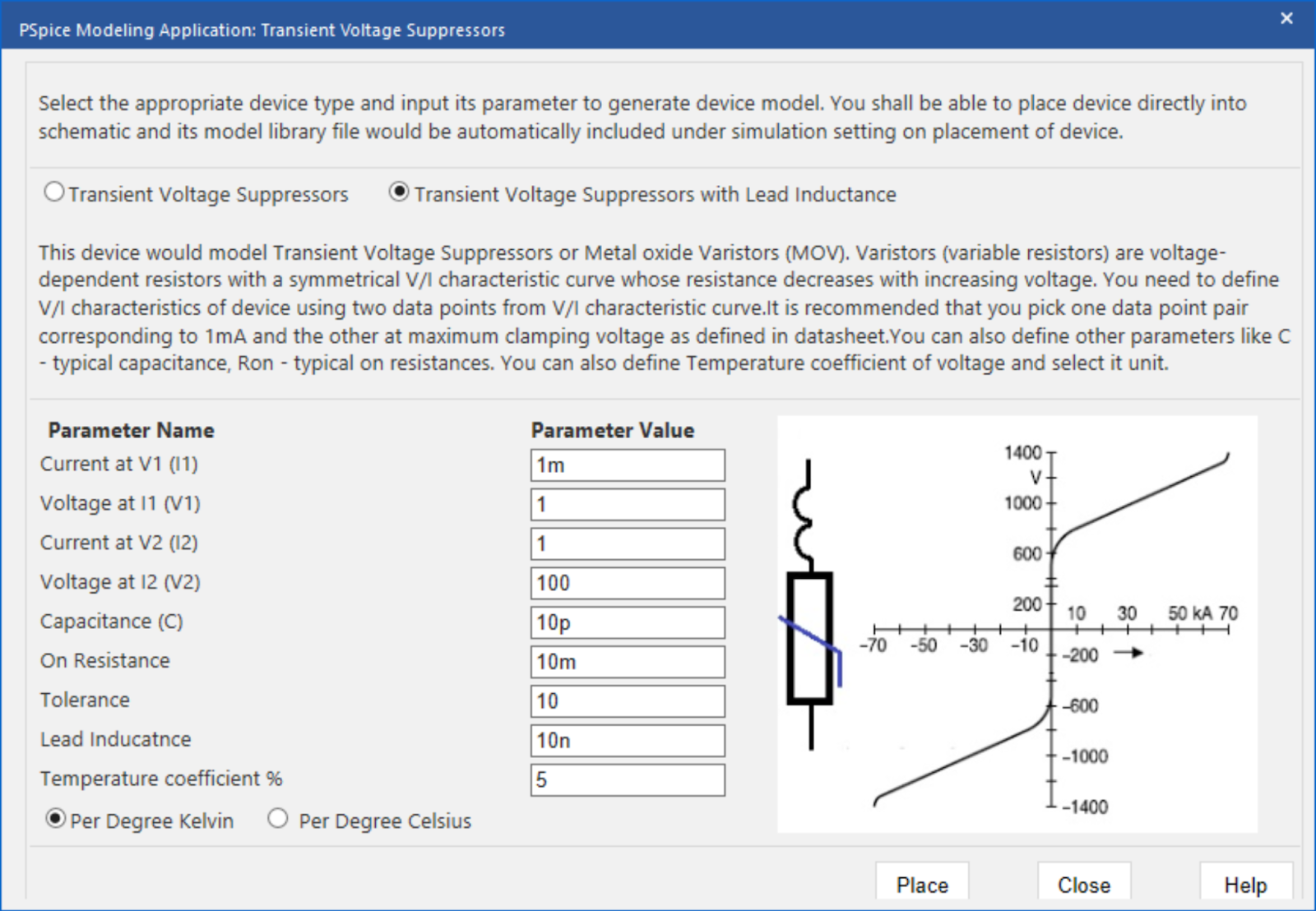
Modeling designs helps engineers verify whether their circuit will function as intended. Modeling programs simulate circuit behavior under different conditions and in accordance with the design requirements, allowing engineers to better plan and build circuits.
Typically, to model components, generic models are used, which produce inaccurate and unrealistic simulations based on ideal conditions. This can cause functionality issues to go undetected until far later in the design process. To confidently simulate a component, create a Transient Voltage Suppressor (TVS) SPICE model using specifications from a manufacturer’s datasheet.
What is a Transient Voltage Suppressor?
A transient voltage suppressor (TVS) is connected in parallel to circuits for protection against voltage transients or surges. There are various types of transient voltage suppressors. Metal oxide varistors (MOVs) are voltage-dependent resistors with a symmetrical Voltage/Current (V/I) characteristic curve. The resistance of these devices decreases when voltage increases. MOVs are often used to protect power sources and components.
What is Needed to Model a Transient Voltage Suppressor?
To create the required transient voltage suppressor or metal oxide varistor for simulation, there are three items that must be defined:
- Type
- Should the model include lead inductance?
- Voltage/Current Characteristics
- What are the V/I characteristics of the device?
- Device Specifications
- Are there other specifications of the device that need to be included: capacitance, tolerance, temperature coefficient, etc.?
This information must be incorporated into the SPICE simulation model which can be achieved by manually creating or editing a text file. Keep in mind if the transient voltage suppressor model created does not produce the intended outcome and a decision is made to change components, values will need to be edited manually. This manual process to produce an accurate TVS model is time consuming and increases the likelihood of errors; however, the PSpice Modeling App provides a fast, easily configurable, and fully integrated method to create a transient voltage suppressor for simulation.
Creating a Transient Voltage Suppressor (TVS) SPICE Model with PSpice
The transient voltage suppressor modeling application quickly creates TVS or metal oxide varistor models with a wizard-based approach. The necessary specifications are predefined and users can easily input the TVS characteristics, defined by manufacturers, directly into parameters:
- Type: Select a Transient Voltage Suppressor with or without lead inductance. Lead inductance affects the response time of varistors.

- V/I Characteristics: Define V/I characteristics of the device using two data points from the V/I characteristic curve. It is recommended that one data point pair corresponds to 1mA and the other data point pair is selected at the maximum clamping voltage as defined in the datasheet.
- Current at V1: Define the current of the first voltage/current data point pair. This is typically set to 1mA.
- Voltage at I1: Define the corresponding voltage when the current is 1mA.
- Current at V2: Define the corresponding current when the voltage is at the maximum clamping voltage. This value is near the breakdown region and often defined in the datasheet.
- Voltage at I2: Define the voltage of the second voltage/current data point pair. Voltage at I2 is typically set to the maximum clamping voltage. This value is near the breakdown region and is defined in the manufacturer’s datasheet.

- Capacitance: Define the typical capacitance.
- On Resistance: Define the typical resistance of the device in the breakdown region.
- Tolerance: Define the tolerance for the varistor voltage.
- Temperature Coefficient: Specify the temperature coefficient. Transient voltage suppressors show a negative temperature coefficient of voltage. An increase in leakage current is consequently noticeable at higher temperatures.
- Temperature Coefficient Units: Specify if the temperature coefficient is defined in % per degree Kelvin or % per degree Celsius.
If a transient voltage suppressor with lead inductance was selected, the following parameter must also be defined:

- Lead Inductance: Specify the package and lead inductance. The varistor should use the shortest possible leads to reduce inductance as this affects the response time.
Using the inputted information above, the PSpice Modeling App generates a schematic symbol and automatically associates the newly created transient voltage suppressor SPICE model without leaving the OrCAD Capture environment. The PSpice Modeling App also automatically manages the simulation profile configuration, eliminating any library set up for simulation. To try this yourself, be sure to download the Free Trial of OrCAD and check back for more SPICE model how-to’s in this series and get step-by-step instructions to create a Transient Voltage Suppressor SPICE model in PSpice here.











